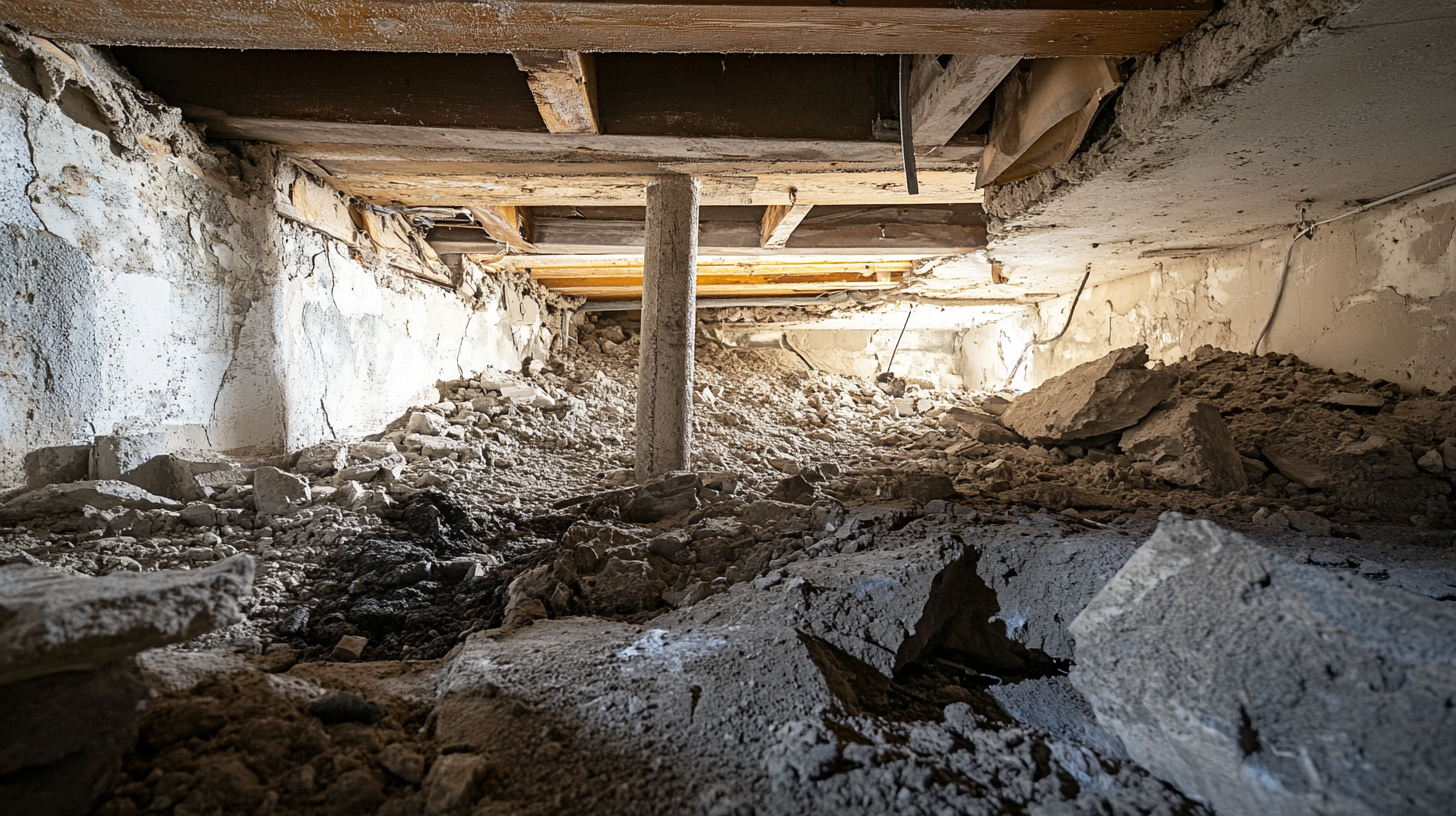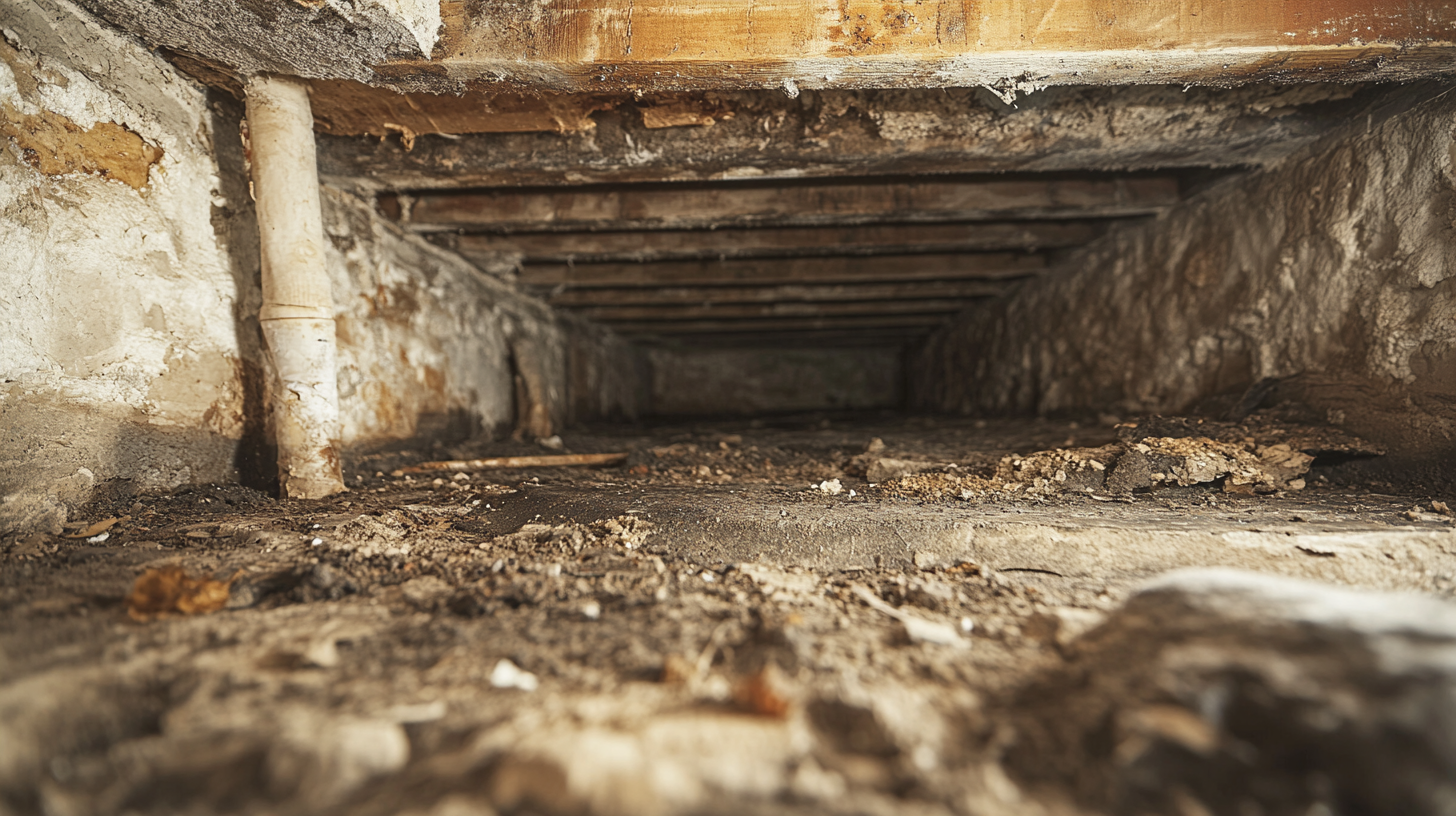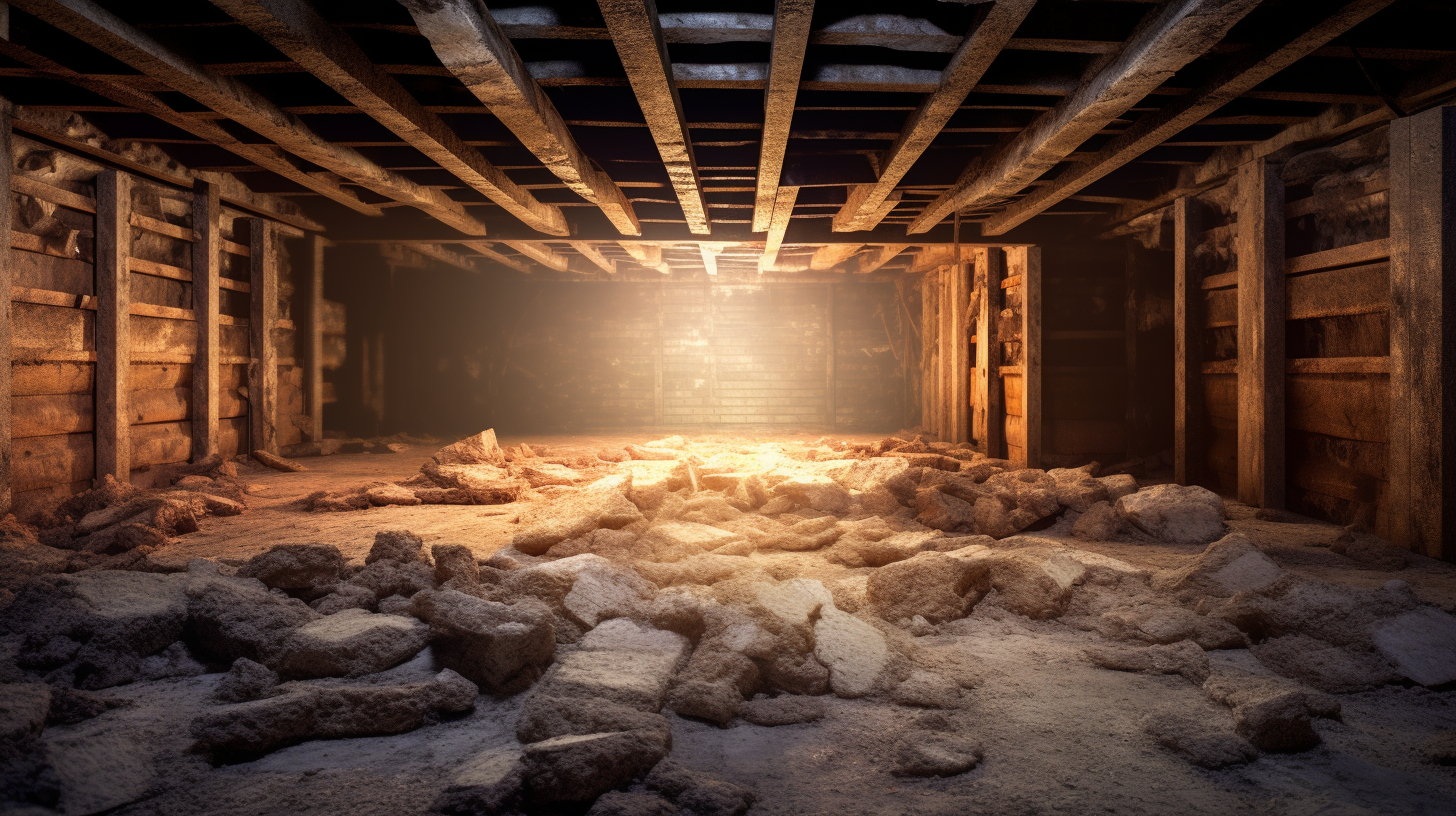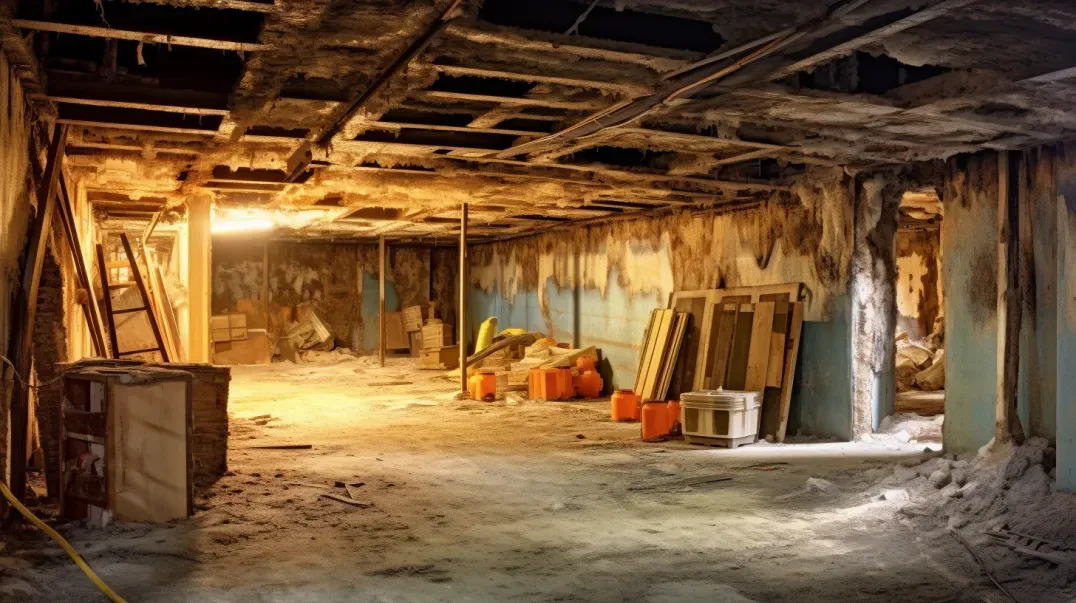Nestled beneath the floors we walk on and often unnoticed, the crawl space of a home holds a pivotal role in maintaining the structural integrity, air quality, and overall health of our living environments. Yet, its significance is frequently overlooked until problems arise. Proper ventilation of this hidden area is not just a matter of routine maintenance; it's a vital practice that can have far-reaching implications for your home. This blog delves into the crucial importance of proper crawl space ventilation, shedding light on how this often-ignored aspect of home care can prevent a multitude of issues, from mold growth and wood rot to pest infestations and poor indoor air quality.
The air quality in your crawl space directly influences the air you breathe in your living spaces above. Moisture is a natural enemy of a healthy home, and without adequate ventilation, your crawl space can become a reservoir for dampness, fostering an environment where mold thrives, wood structures weaken, and pests find sanctuary. The consequences of neglect can be severe, affecting not only the durability of your home but also the health of its inhabitants.
Understanding the dynamics of crawl space ventilation is key to safeguarding your home against these threats. This blog will guide you through the principles of effective ventilation, the risks of inadequate airflow, and the benefits that a well-ventilated crawl space brings to your home. From enhancing air quality to protecting the structural foundation of your house, the advantages of proper crawl space ventilation are manifold and undeniable.
Join us as we explore the significance of this critical aspect of home maintenance, providing you with the knowledge and insights needed to ensure your crawl space—and by extension, your home—remains dry, healthy, and well-ventilated. Discover how taking proactive steps in managing crawl space ventilation can lead to a more comfortable, safer, and potentially cost-saving future for your home.
Understanding Crawl Space Ventilation
Crawl space ventilation is a critical component of home maintenance that plays a significant role in preserving the health and longevity of a property. Proper ventilation in the crawl space is essential for controlling moisture levels, maintaining structural integrity, and ensuring a healthy living environment. This guide delves into the purpose of crawl space ventilation and the key factors homeowners should consider when choosing a ventilation system.
The Purpose of Crawl Space Ventilation
Role in Moisture Control and Structural Integrity:
The primary purpose of crawl space ventilation is to reduce moisture accumulation, which can lead to mold growth, wood rot, and ultimately compromise the structural integrity of your home. By allowing air to circulate and expel excess moisture, ventilation helps protect the foundation and structural components from deterioration caused by damp conditions.
Impact on Indoor Air Quality and Energy Efficiency:
Crawl space ventilation also significantly impacts indoor air quality. Moisture and mold in the crawl space can lead to poor air quality throughout the home, affecting the health of its inhabitants. Proper ventilation mitigates these risks by reducing humidity levels and preventing mold growth. Additionally, a well-ventilated crawl space can improve energy efficiency by preventing excess moisture from affecting the home's thermal envelope, leading to more stable indoor temperatures and reduced energy costs.
Key Factors in Choosing a Ventilation System
Climate Considerations:
The climate in which your home is located plays a crucial role in determining the type of ventilation system needed. In areas with high humidity, more aggressive moisture control measures may be necessary, potentially including mechanical ventilation or dehumidifiers. Conversely, in dryer climates, natural ventilation might suffice to maintain optimal conditions in the crawl space.
Home Size and Crawl Space Specifics:
The size of your home and the specifics of your crawl space, such as its size, layout, and existing moisture levels, also influence the choice of a ventilation system. Larger homes or crawl spaces may require more extensive ventilation solutions to achieve effective moisture control. Additionally, the presence of any water intrusion issues, such as leaks or poor drainage, will necessitate tailored solutions to address these challenges effectively.
Choosing the right ventilation system for your crawl space is a decision that requires careful consideration of various factors, including climate, home size, and the unique characteristics of your crawl space. By understanding the purpose of crawl space ventilation and the key factors involved in selecting a system, homeowners can make informed decisions that ensure the longevity of their home, the health of its occupants, and the efficiency of their energy use.
Natural Ventilation Systems
In the quest for sustainable and efficient home environments, natural ventilation systems stand out for their ability to harness environmental conditions to maintain indoor air quality and comfort. Utilizing the natural forces of wind and thermal buoyancy, these systems facilitate the movement of air without the aid of mechanical devices, offering an eco-friendly alternative to traditional HVAC systems. This guide delves into the advantages and disadvantages of natural ventilation, providing homeowners with a comprehensive understanding of its implications for residential design and comfort.
Pros of Natural Ventilation
Cost-effectiveness and Simplicity:
One of the most appealing aspects of natural ventilation is its cost-effectiveness. Unlike mechanical systems that require significant energy consumption to operate, natural ventilation leverages the free and abundant resources of wind and thermal differences to circulate air. This not only reduces utility bills but also simplifies the design and operation of home ventilation, making it accessible and manageable for homeowners.
Minimal Maintenance Requirements:
Natural ventilation systems are inherently low maintenance. Without the complex components and machinery found in mechanical systems, there's less that can go wrong, reducing the need for regular checks and repairs. This simplicity extends the lifespan of the ventilation system and further decreases the overall cost of maintaining a comfortable and healthy indoor environment.
Cons of Natural Ventilation
Limited Control Over Airflow:
Despite its benefits, natural ventilation offers limited control over airflow. The effectiveness of these systems is heavily dependent on external conditions, such as wind speed and direction, as well as the design of the building. This can result in inconsistent ventilation, with periods of either insufficient airflow leading to stagnant air or excessive airflow causing drafts and discomfort.
Inefficiency in Certain Climates or Seasons:
Natural ventilation's efficiency varies significantly across different climates and seasons. In areas with high humidity or extreme temperatures, relying solely on natural ventilation may not adequately maintain indoor comfort or air quality. During hot, humid summers or cold winters, the lack of control over temperature and humidity levels can make natural ventilation systems less effective, necessitating supplemental cooling or heating solutions.
Natural ventilation systems offer a sustainable and cost-effective approach to maintaining indoor air quality and comfort. However, their effectiveness is influenced by a variety of factors, including climate, building design, and the specific needs of the occupants. While the simplicity and low maintenance of natural ventilation are advantageous, the limitations in control and efficiency in certain conditions highlight the importance of considering supplemental systems or hybrid approaches for optimal indoor environmental quality.
Mechanical Ventilation Systems
In the modern pursuit of creating optimal indoor environments, mechanical ventilation systems have become a cornerstone of residential and commercial buildings alike. These systems, designed to mechanically control the flow of air in and out of a space, offer precise management of indoor air quality, temperature, and humidity. While mechanical ventilation provides significant advantages, especially in challenging climates or specific architectural designs, it also comes with considerations of cost and maintenance. This guide examines the benefits and drawbacks of mechanical ventilation systems, offering insights into their role in contemporary building design.
Pros of Mechanical Ventilation
Enhanced Control Over Humidity and Temperature:
One of the primary benefits of mechanical ventilation systems is their ability to provide enhanced control over indoor humidity and temperature levels. Unlike natural ventilation, which relies on external conditions, mechanical systems can maintain consistent indoor environments regardless of outdoor weather variations. This control is particularly beneficial in regions with extreme climates, ensuring comfortable and healthy living spaces year-round.
Effectiveness in Diverse Climates:
Mechanical ventilation systems are designed to be effective across a wide range of climates, from the humid tropics to arid deserts. They can be tailored to address the specific ventilation and air quality needs of any setting, incorporating features such as heat recovery in cold climates or dehumidification in moist environments. This adaptability makes mechanical ventilation a versatile solution for maintaining optimal indoor air quality in any location.
Cons of Mechanical Ventilation
Higher Installation and Operational Costs:
The complexity and technology behind mechanical ventilation systems often result in higher installation and operational costs compared to natural ventilation methods. The initial investment includes not only the cost of the equipment but also professional installation and integration into the building's design. Additionally, mechanical systems require energy to operate, which can lead to increased utility bills, particularly in cases where the system must run continuously to meet air quality or temperature requirements.
Potential for Mechanical Failures and Maintenance Needs:
With complexity comes the potential for mechanical failures. Components such as fans, filters, and ductwork can malfunction or degrade over time, necessitating repairs or replacements. Regular maintenance is essential to ensure the system operates efficiently and to prevent unexpected breakdowns. However, the need for ongoing maintenance and the possibility of costly repairs are significant considerations for building owners and managers.
Mechanical ventilation systems offer a powerful tool for creating comfortable, healthy indoor environments, especially in settings where natural ventilation falls short. Their ability to precisely control air quality, temperature, and humidity makes them invaluable in modern building design. However, the associated costs and maintenance requirements highlight the importance of careful planning and consideration when choosing to implement a mechanical ventilation solution. By weighing the pros and cons, homeowners and building professionals can make informed decisions that best meet the needs of their spaces and occupants.
Ventilation with HVAC Integration
In the quest for optimal indoor air quality and comfort, integrating ventilation with Heating, Ventilation, and Air Conditioning (HVAC) systems presents a holistic approach to climate control within homes and buildings. This method combines the benefits of controlled ventilation with the temperature and humidity management capabilities of HVAC systems, offering a unified solution for indoor environmental control. While HVAC integrated systems boast several advantages, from enhanced climate control to potential energy savings, they also come with considerations regarding complexity, cost, and system dependency. This guide delves into the pros and cons of HVAC integrated ventilation systems, providing insights into their role in modern building design and maintenance.
Pros of HVAC Integrated Systems
Comprehensive Climate Control for the Entire Home:
One of the primary benefits of integrating ventilation with HVAC systems is the ability to achieve comprehensive climate control throughout the entire home. This integration allows for the simultaneous management of air quality, temperature, and humidity levels, ensuring a comfortable and healthy living environment in all seasons. By coordinating ventilation with heating and cooling operations, these systems can efficiently distribute fresh, conditioned air to every part of the home.
Potential for Improved Energy Efficiency:
HVAC integrated systems have the potential to improve energy efficiency by optimizing the use of ventilation and conditioning resources. For example, during cooler months, heat recovery ventilators (HRVs) can capture heat from outgoing stale air to warm incoming fresh air, reducing the heating load on the HVAC system. Similarly, in warm climates, energy recovery ventilators (ERVs) can use the outgoing air to pre-cool and dehumidify incoming air, easing the cooling demand. This synergy can lead to significant energy savings and lower utility bills.
Cons of HVAC Integrated Systems
Complexity and Cost of Installation:
The integration of ventilation with HVAC systems introduces complexity into the installation process, often requiring specialized knowledge and equipment. This complexity can increase the initial cost of installation, making it a significant investment for homeowners and building managers. Additionally, retrofitting an integrated system into an existing building may present challenges that further contribute to the overall cost.
Dependence on the Performance of the Overall HVAC System:
Another consideration is the dependence of the ventilation function on the performance of the overall HVAC system. If the HVAC system experiences issues or failures, it can compromise not only temperature control but also ventilation and air quality. This interdependence necessitates regular maintenance and prompt repairs to ensure the system's reliability and effectiveness in providing a healthy indoor environment.
Integrating ventilation with HVAC systems offers a comprehensive approach to climate control, marrying the benefits of fresh air supply with efficient temperature and humidity management. While the advantages of improved climate control and potential energy savings are compelling, the considerations of installation complexity, cost, and system dependency highlight the importance of careful planning and professional consultation. By weighing the pros and cons, homeowners and building professionals can make informed decisions that align with their needs, preferences, and budget, ensuring the long-term success of their indoor climate control strategy.
Dehumidifier-Based Ventilation Systems
In the quest to maintain optimal indoor air quality and protect the structural integrity of homes, dehumidifier-based ventilation systems have emerged as a powerful solution, especially in areas prone to high humidity levels. These systems specifically target moisture control, offering homeowners a focused approach to managing the humidity in crawl spaces and basements. While dehumidifier-based systems come with significant advantages, including precise humidity control and effectiveness in damp climates, they also present certain challenges, such as energy consumption and maintenance requirements. This guide explores the pros and cons of dehumidifier-based ventilation systems, providing insights into their suitability for various home environments.
Pros of Dehumidifier-Based Systems
Precise Control Over Crawl Space Humidity:
One of the primary benefits of dehumidifier-based systems is their ability to provide precise control over humidity levels in crawl spaces. By actively removing moisture from the air, these systems can maintain the humidity within a desired range, preventing the conditions that lead to mold growth, wood rot, and other moisture-related issues. This level of control is particularly beneficial in regions where external humidity levels fluctuate significantly.
Effective in Highly Humid Regions:
Dehumidifier-based systems excel in environments with consistently high humidity levels. In such regions, natural ventilation may not suffice to reduce moisture levels effectively, as it can introduce more humid air into the space. Dehumidifiers work independently of external humidity conditions, ensuring that crawl spaces remain dry even during the wettest seasons.
Cons of Dehumidifier-Based Systems
Ongoing Energy Costs:
While dehumidifier-based systems are effective in controlling humidity, they require electricity to operate, leading to ongoing energy costs. Depending on the size of the space and the humidity level that needs to be maintained, these systems can consume a significant amount of power, impacting household energy bills. Homeowners should consider the energy efficiency of the dehumidifier models to mitigate these costs.
Regular Maintenance and Potential for Mechanical Issues:
Dehumidifiers, like all mechanical systems, require regular maintenance to operate efficiently. This includes cleaning or replacing filters, emptying water collection containers (unless directly drained), and ensuring the unit is free from dust and debris. Additionally, there is always the potential for mechanical failures, which can necessitate repairs or replacement parts. Homeowners should be prepared for the possibility of maintenance and repair needs over the lifespan of the system.
Dehumidifier-based ventilation systems offer a targeted approach to managing crawl space humidity, providing benefits that are particularly valuable in damp climates. However, the considerations of energy consumption and maintenance requirements highlight the importance of weighing the pros and cons before installation. By understanding the advantages and challenges of dehumidifier-based systems, homeowners can make informed decisions that best meet their needs for moisture control and indoor air quality.
FAQs
Contact Trench Guys Today!
Trench Guys will do everything we can to ensure your experience with us is excellent.
Request A FREE Estimate
Request a Free Estimate Form
Checkout Recent Post




Got a Question? We’re Here to Help.
You can arrange an appointment or make an enquiry by phone or email, orget in touch to us via our contact form.



